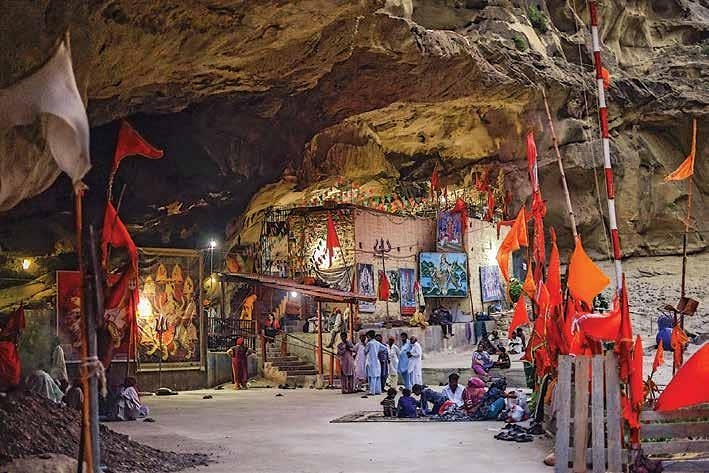Magazine
Faith Under A Shadow

A thought-provoking documentation of Hindu temples in Pakistan, attesting to the plurality of the country’s heritage, the mystical traditions of its past and the inter-faith harmony that is now all but consigned to oblivion.
The majestic pool at Hinglaj, Balochistan, considered Goddess Durga’s most sacred seat.
Pristine Calm: The sacred pool at Katas Raj, Punjab, that Hindus believe was created by Shiva’s tears when Goddess Sati breathed her last. The Mahabharata says that Pandavas sought refuge here during their wanderings. Travel accounts of both AlBiruni and Hiuen Tsang refer to the temples and stupas surrounding it.
Divine Dwelling: Durga’s shrine at Hinglaj, where Hindu lore believes Goddess Sati’s head to have fallen when Vishnu dismembered her corpse. A pilgrimage site for centuries, it has hosted Guru Nanak Dev and Gorakhnath. Local Balochis and visitors from Iran revere the site as Nani Mandir and it is a four-hour drive from Karachi.
Remains of the Day: The interiors of the stunning cupola at Gori Jain Temple, near Nagarparkar, Sindh. Constructed in 1376 using Jodhpuri stone, the shrine to worship Parasnath is now abandoned, home to bats and pigeons.
Faith Matters: Two young devotees watch the immersion of idols during Ganesh Chaturthi in Karachi. Both big and small Ganesha statues are carried to the seafront where aartis are performed before the idols are lowered into the water.
For One And All: The Panchmukhi Hanuman Mandir at Soldier Bazaar, Karachi, depicts all five aspects of the deity: Hanuman, Narasimha, Adivaraha, Hayagriva and Garuda. Known for its healing powers, it attracts Hindus, Muslims and Christians, from places as far as Peshawar, Hazara, Swat and Balochistan.
Journey’s end: The last night of Navratri at Durga’s cavern, Hinglaj. The cave is 300 feet in length, 150 feet wide and 90 feet high and divided into two tiers. The tier below signifies the Goddess’ womb.
Melting Pot: Pilgrims walk around a holy peepal tree at the Gorakhnath Temple, Gor Khattree, Peshawar, Khyber Pakhtunkhwa. The tree and the site find mention in the Baburnama, though the present-day temple structure was built by the Sikhs in the 19th century.
Support Swarajya's 50 Ground Reports Project & Sponsor A Story
Every general election Swarajya does a 50 ground reports project.
Aimed only at serious readers and those who appreciate the nuances of political undercurrents, the project provides a sense of India's electoral landscape. As you know, these reports are produced after considerable investment of travel, time and effort on the ground.
This time too we've kicked off the project in style and have covered over 30 constituencies already. If you're someone who appreciates such work and have enjoyed our coverage please consider sponsoring a ground report for just Rs 2999 to Rs 19,999 - it goes a long way in helping us produce more quality reportage.
You can also back this project by becoming a subscriber for as little as Rs 999 - so do click on this links and choose a plan that suits you and back us.
Click below to contribute.
Latest